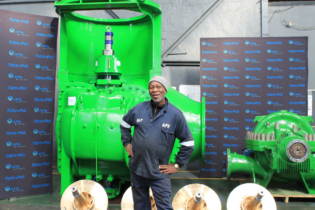The finals of the 2018 SAICE Schools Water Competition was held recently giving learners hands-on experience planning, designing, constructing and operating a water distribution network.
Held at the Grundfos Building in Germiston the AQUALIBRIUM finals hosted teams from around the country as well as Swaziland and Zimbabawe. The teams had to design a model water distribution network to distribute three litres of water equally between three points on the grid using two different diameter pipes and connection pieces. They were then judged on how well they executed the task – working on a penalty points system.Winning ways
After some tense moments during the construction of the water distribution network and the adjudication process, the winners were Hoërskool Framesby from Nelson Mandela Bay in Port Elizabeth with only 45 penalty points. In second place were two teams on 125 penalty points, Domino Servite School from Pietermaritzburg and Harriston High School from Harrismith in the Free State. Third place went to Sentraal High School in Mangaung, Bloemfontein. The teams from these winning schools each received a substantial amount of prize-money, and their educators received a token of appreciation for their enthusiasm, involvement and support.The participants were also taken on a tour of Grundfos’ sustainable intelligence hub, which impressed them with its amazing exhibits.








